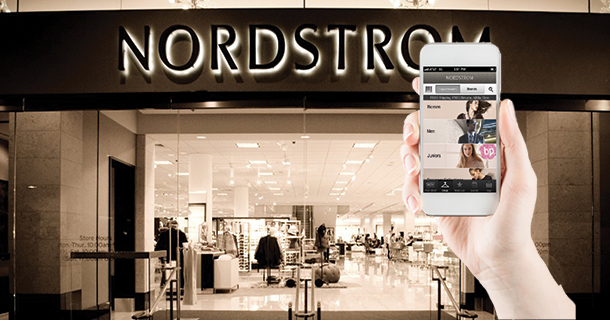But guess what? That’s not going to happen. The most notable characteristic of those technologies is their accessibility—to customers, employees, partners, and competitors. Because they are so accessible, it is very difficult to generate competitive advantage from any of them. That doesn’t mean you can ignore them. But the truth is that, for the most part, they redefine minimum requirements for operating in a given industry—not advantages.
Only a small percentage of companies will gain competitive advantage from SMACIT technologies. Those that do will focus less on the individual technologies and more on how they rally all those technologies, in unison, to fulfill a distinctive purpose. We don’t mean a generic, high-concept purpose like “generating shareholder value.” Instead, we mean something much more down-to-earth—a strategic focus that directs their technology spending.
Take the large retailer Nordstrom. For nearly 100 years, Nordstrom’s purpose has been to provide a fabulous customer experience by empowering customers and the employees who serve them. To fulfill this purpose, as far back as the late 1990s, Nordstrom started looking for opportunities to invest in technologies that would further empower their famously empowered employees. These investments included Nordstrom.com and a perpetual inventory system that allowed Nordstrom to offer a consistent multi-channel experience by 2002.
Then, between 2004 and 2014, Nordstrom made an extraordinary series of investments, each aimed squarely at that same purpose of providing a fabulous customer experience. First came a new point-of-sale system that included personal book software so that salespeople could track individual customer requests and needs online. This was followed in quick succession by the launch of an innovation lab, the creation of Nordstrom apps, the introduction of popular social apps that created buzz as well as mobile checkout, support for salespeople texting, and ultimately the acquisition of a cloud-based men’s personalized clothing service.
Because Nordstrom.com and the Nordstrom app are integrated with the inventory management system, customers can find what they want in one place and have it delivered from somewhere else to a third place. Nordstrom’s engagement with popular social apps, like Pinterest, extends what Nordstrom’s employees know about their customers’ preferences. Items popular on Pinterest are tagged with a red tag bearing the Pinterest logo and prominently displayed in the store, linking their online and offline worlds. Their employees, famous for providing customer service, are now armed with information not only about what a customer has bought in the past, but what they like, and even what they shopped for but could not find. Mobile checkout makes it easier than ever for any employee to see a customer through the payment process and thank them, rather than sending them to a cash register.
They have not only introduced new channels, but they have integrated them in ways that empower employees and customers. Nordstrom hasn’t used SMACIT to develop a digital business model—they have further digitized their business model, and pursued their purpose, using SMACIT.
The persistent digitization of Nordstrom’s business has allowed the company to grow revenues by more than 50 percent in the last five years. The company is growing sales in both full-price and off-price businesses through both online and traditional channels.
Nordstrom’s digital capabilities make complete sense for Nordstrom. What makes them important is that they are tightly integrated with all the parts of the business that ultimately serve the customer. This is not a matter of having the best apps, analytics, or social media tools. Instead, it’s a matter of tending to the details of building integrated digital capabilities, one at a time, making the right data accessible, and simplifying processes. Most retailers will struggle to do this because they haven’t architected their product or customer data for easy access by the new digital capabilities. Without those core capabilities, integration with and among new digital capabilities is virtually impossible.
Most companies will struggle to achieve this kind of integration. They will end up with a bunch of clever but isolated SMACIT applications, attempting to compete with companies who own an innovation engine that constantly raises the bar for delighting customers.
It’s time to get serious about defining the purpose of your digital business model. Don’t worry about developing a strategy for social, mobile, cloud, or any other technology. Develop a strategy for succeeding in the digital economy—a purpose that leverages your unique capabilities and responds to market opportunities. Then grab every technology that takes you there.
Authors: Jeanne W. Ross is a director of and a principal research scientist at the Center for Information Systems Research (CISR) at MIT Sloan School of Management. Cynthia M. Beath is a professor emeritus at the University of Texas at Austin. Ina Sebastian is a research associate at MIT Sloan’s Center for Information Systems Research.















